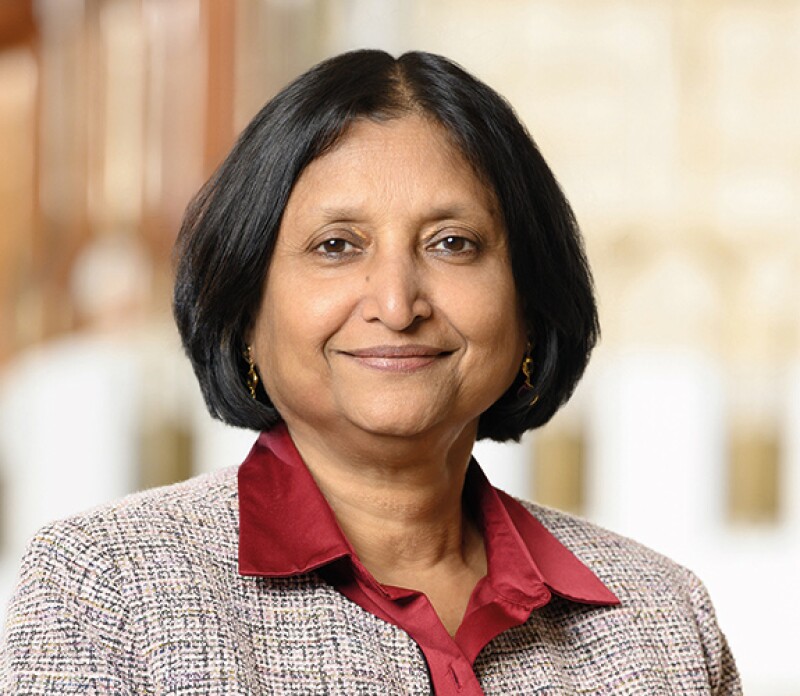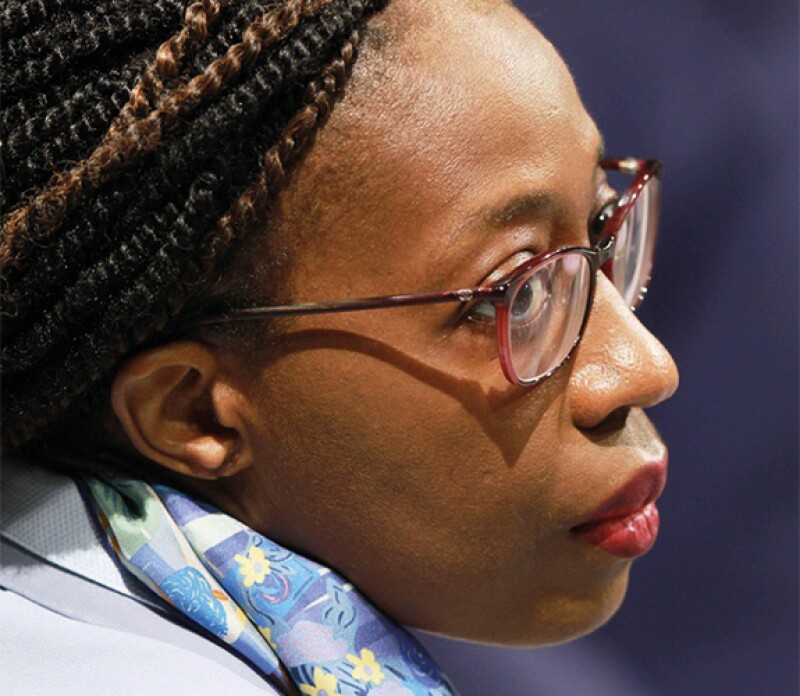The elephant in the room is looking particularly cumbersome this week. This year is set to be the second or third hottest ever, after 2024 became the first year ever with temperatures more than 1.5°C above pre-industrial levels.
In the week before the World Bank’s Annual Meetings, Tropical Storm Jerry was veering northwards toward the US mid-Atlantic coast, three months after Chantal caused an estimated $4bn-$6bn of flooding damage in the Carolinas, according to AccuWeather.
For many developing countries, climate change is no longer a future threat — it is a present torment.
Their finance ministers and development leaders converging in Washington for the Meetings this week will be looking to the Bank to expand its role as the world’s leading provider of finance to help countries lessen and cope with the threat of global warming.
In 2023, the World Bank Group committed to increasing its climate financing from 35% of annual financing to 45% by the financial year to June 2025. In financial 2024 it delivered a record $42.6bn in climate finance, 44% of its financing, and this past year it exceeded the target, at 48%.
But this commitment conflicts with the rhetoric of its largest shareholder, the United States. Donald Trump has made a series of statements criticising policies to fund the mitigation of climate change and enabling countries to adapt to its impacts. In an angry speech last month at the United Nations, the US president described climate change as “the greatest con job ever perpetrated on the world”, adding: “If you don’t get away from this green scam, your country is going to fail.”
The US has argued the Bank and other international financial institutions (IFIs) should reduce their emphasis on climate and be more ready to finance fossil fuels, especially gas.
But so far, the impact of this rhetoric has been less than feared, according to Jon Sward, environment project manager at the Bretton Woods Project, a civil society watchdog.
“There are quite diverse views on energy within the [World Bank’s] board, and so while there has been much talk about a new World Bank energy strategy, it’s unclear what — if anything — this will actually mean in practice,” he said.
The World Bank is governed by consensus, which means that although the US has a veto on decisions and wields unparalleled influence, it cannot dictate policy on its own.
No retreat
Countries like the UK, Denmark, Finland, New Zealand and Sweden, with significant voting power in the Bank, have significantly reduced or eliminated their bilateral financing for overseas fossil fuel projects, with some now providing no new support.

“This makes it increasingly difficult for fossil fuel projects to be approved at the Bank via consensus decisions,” Sward says.
Asked whether there was any danger the World Bank would retreat from its targets in the light of the Trump administration’s criticisms of climate change policies, Anshula Kant, managing director and chief financial officer of the World Bank Group, said the institution was focused on “execution beyond the targets”.
In an interview with GlobalMarkets, she said the Bank was determined to help countries with their development programmes in a “smart” way. She gave the example of helping a country finance building a school resilient to flooding in a flood-prone area. “So, given the logic or purpose behind it, I’m pretty sure we’ll be meeting our targets,” she said. “We are not rolling back our targets.”
Adaptation emphasis
One of the most significant aspects of the World Bank’s climate strategy is its commitment to devote equal financing to climate adaptation and mitigation — something developing countries have long campaigned for.
Historically, mitigation projects — such as solar and wind power farms — have received the lion’s share of climate funding. They are easier to finance because they produce revenue to repay debt — and they make an immediate impact on the problem. But many countries are already experiencing severe climate impacts and need financing now to deal with the effects and build resilience to future events.
Adaptation projects funded by the World Bank include early warning systems for extreme weather events, climate-resilient infrastructure, drought-resistant agricultural practices and coastal protection measures.
These investments are particularly critical for small island countries and some of the poorest states, which face existential threats from sea level rise and desertification, as well as increasingly common extreme weather.
In its 2025 fiscal year, 42% of climate finance by the Bank’s two main lending arms, the International Bank for Reconstruction and Development and International Development Association, supported climate change adaptation and resilience, up from 33% the year before. This is still short of the 50% target. “We got to about 43%; we couldn’t get to the 50%,” says Kant. “So there’s still more work to be done.”
Synergy with poverty reduction
One of the principles of the World Bank’s approach to climate finance is that it must be integrated with broader development objectives.
Its Climate Change Action Plan 2021-25 advances the climate aspects of the World Bank Group’s Green, Resilient and Inclusive Development (GRID) approach, which pursues poverty eradication and shared prosperity through a sustainability lens.
The Bank recognises that climate change and poverty are inextricably linked: sustainable development that lifts people out of poverty while protecting the environment can contribute significantly to climate goals.
Conversely, climate impacts disproportionately affect the world’s poorest people, who have the least capacity to avoid or recover from climate shocks.
Lord Nick Stern, a former chief economist of the World Bank, author of the 2006 Stern Review into the economics of climate change and now chair of the Global School of Sustainability at the London School of Economics, described this in a discussion at the LSE in September as one of the “great injustices”: that people who have done the least to create the problem through past greenhouse gas emissions are also the most vulnerable.
The World Bank has tried to address this, by focusing increasingly on supporting cutting edge climate technologies, from advanced renewable energy systems to climate-smart agriculture — raising the knowledge base in countries of operation, as well as tackling their climate risks.
Recent projects include green hydrogen, battery storage to support integrating renewable energy into the grid, and financing for nature-based solutions with climate and biodiversity benefits.
“The technology has got better and better,” said Stern. “So the urgency has become more strong, the opportunity has become much bigger. And that’s precisely the moment when a big part of the international public discussion has got diverted by other things. But objectively, the case for action is now overwhelming.”
Money hunt
As with all aspects of development, meeting climate needs will come down to money. Last year, the Independent High Level Expert Group on Climate Finance (IHLEG), set up by the Cop 26 climate summit in Glasgow in 2021, put the global need for climate investment at between $6.3tr and $6.7tr a year by 2030.
Speaking at the LSE in September, Vera Songwe, co-chair of the IHLEG, said $1.3tr of external financing — money outside domestic resources — would be needed. Multilateral development banks should triple their finance, she argued, which would mean the World Bank reaching some $120bn. “To do the investment story of the future,” she said, “you need the resources today.”

One way to deliver that would be for shareholders to inject more capital into the World Bank.
Two years ago, it contemplated a one-off capital increase, a move backed by the Center for Global Development thinktank as “the most plausible way to get considerably more finance for effective climate mitigation in developing countries”.
However, Janet Yellen, then US treasury secretary, nixed the idea, arguing that the World Bank should instead use its existing resources more effectively.
It is even less likely that a capital increase would be approved now, especially if it were focused on climate change. “It’s very hard to do that now when you have the US with the position that it has about its stake in multilateralism generally,” said Melinda Bohannon, director general of global issues at the UK’s Foreign, Commonwealth & Development Office, at the LSE event.
The Bank has heeded Yellen and moved to expand its resources by optimising its balance sheet management.
This time last year, Ajay Banga, the Bank’s president, was able to announce he had found ways to stretch its balance sheet to generate $120bn of additional lending over the next 10 years.
Bohannon said the Bank may need to put thoughts of a capital increase “on ice” for now and focus on using risk guarantees, callable capital, pooled blended finance windows and “hybrid manoeuvres” to free up more capital.
Looking for a way forward
The World Bank stands at a critical juncture in its evolution as a climate finance institution. Its ambitious targets set a high hurdle, challenging the Bank to deliver environmental protection to its borrower countries, while raising standards of living.
This week will be a launchpad for the next phase of the journey, as the Bank begins developing its 2026-30 climate strategy.
Bank officials and shareholders meeting in Washington must grapple with two questions —are the Bank’s current efforts sufficient to address the era-defining challenge of climate change; and what other steps should it take to advance climate and development goals hand in hand?
While grasping that nettle, the Bank must also try to strike a stance that does not irk the US government.
Banga has been less vocal on climate issues in recent months, notes Sward at BWP. “Time will tell if this changes. His reputation as a ‘climate champion’ currently hangs in the balance.”
